
The Australian Bureau of Statistics (ABS) has just released trade data for the month of May, which has recorded a monthly trade deficit of -$285 million, up from -$26 million in April (revised down from a previously reported -$203 million). March’s deficit was also revised down to -$1,004 million from a previously reported -$1,282 million.
The market had expected a trade deficit of -$203 million, so the result came in slightly worse than expected.
The trade result was driven primarily by a sharp increase in imports. In seasonally adjusted terms, goods and services credits (exports) rose by $570 million (2%) to $26,766 million, whereas goods and services debits (imports) rose by $829 million (3%) to $27,051 million.
Australia’s two key exports – iron ore and coal – showed little movement over the month, with iron ore exports increasing by $239 million and coal remaining flat. Both export commodities also remain below recent highs, accounting for 40% of Australia’s merchandise exports, down from a peak of 46% in September 2011 (see below chart).
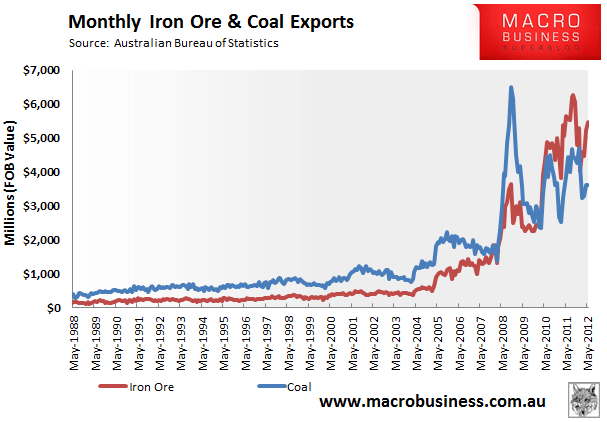
China and Japan retained their status as Australia’s two key export markets, accounting for $7,327 million (32%) and $4,129 million (18%) of exports over the month. Exports to China also hit a new record high over the month, exceeding the previous record (October 2011) by $258 million (see below chart).
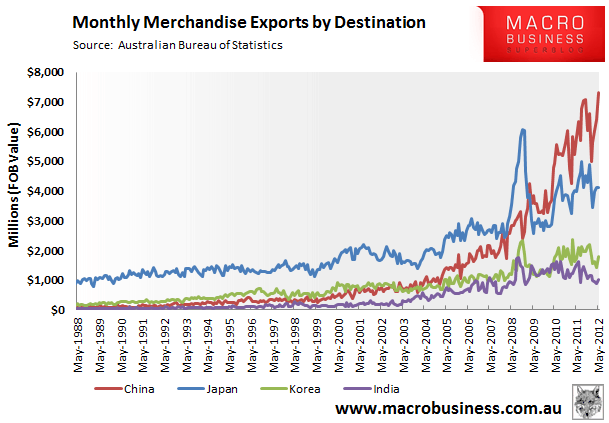
Given its status as Australia’s major producer of iron ore, Western Australia continues to dominate the nation’s exports, achieveing growth of $443 million or 4% in May (see below chart).
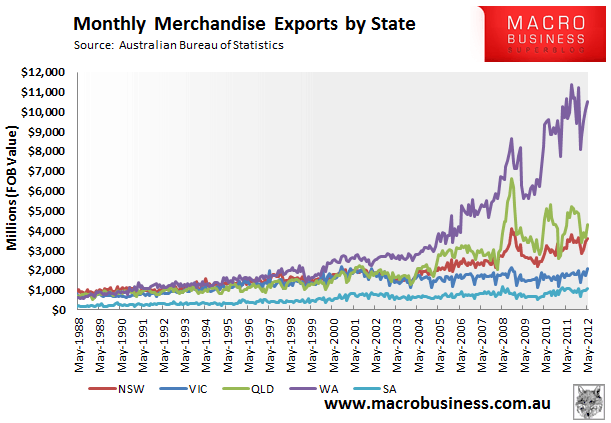
However, Queensland (+$704 million), New South Wales (+$641 million) and Victoria (+$483 million) experienced large increases in imports, which drove the nation’s trade balance down over the month (see below chart).
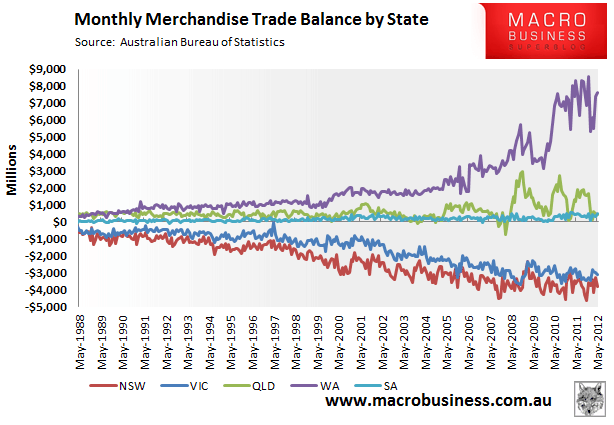
Finally, Australia’s services trade deficit was up slightly, increasing by $29 million over the month, driven by an increase in tourism imports of $27 million. Australian services exports also appear to have stabilised after being in a downtrend that began in late 2008 on account of the high Australian dollar (see below charts).
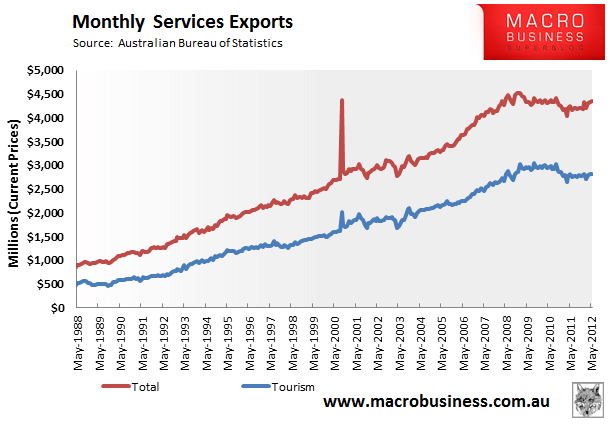
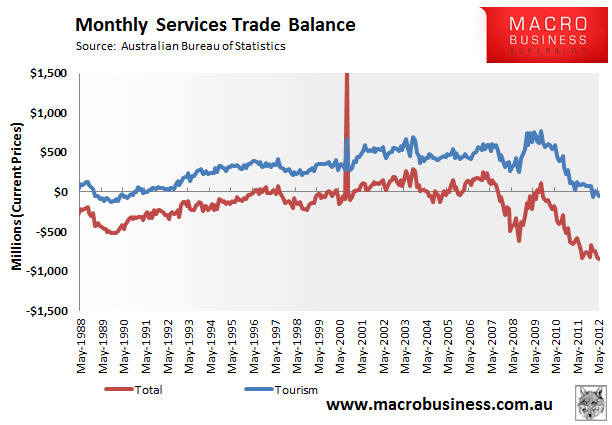
Overall, Australia has recorded cumulative trade deficits of -$2,934 million so far this year, which comes after $35,800 million of cumulative trade surpluses were recorded between April 2010 and December 2011.

